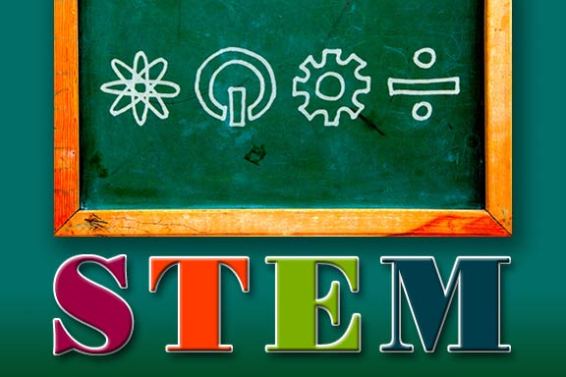Image Source: http://knowledgeposts.com/stem-education-presents-a-new-inquirer.html
When I decided to join this masters program I wasn’t exactly sure what STEM stood for and what it meant. A colleague who’s been in the county for over 25 years introduced me to it. When I started telling her I was looking for graduate programs she immediately told me this was the new cutting edge degree and would provide me many opportunities in the future. So that’s what brought me here today. Now that I’m in the program it’s probably a good idea I figure out what STEM truly stands for and why all of a sudden it’s such a big deal, not only in Montgomery County, but all over the country.
I knew STEM had something to do with technology and … well that’s pretty important these days. The kindergarteners in my classroom sometimes know how to work the fancy Promethean board better than me! I thought continuing my education in technology would be very beneficial and keep me current with my students. The other three pieces, science, math and engineering I wasn’t so familiar with when used in the STEM acronym.
As I read Bybee’s article, I found myself relating to his beginning comments about the misconceptions of STEM. Bybee talked about how STEM is usually interpreted to mean science or math and typically the technology and engineering pieces are forgotten. (Bybee, 2010) I must admit that I too have done this before when thinking and talking about STEM, especially with the engineering piece. As a kindergarten teacher, engineering seems a bit scary. How am I supposed to incorporate engineering into the curriculum? And what part of engineering am I teaching? I really appreciated the way Bybee explained engineering in his article. He explained that engineering directly involves problem solving and innovation. (Bybee, 2010) According to Bybee, “Engineering has some presence in our schools, but certainly not the amount consistent with its careers and contributions to society.” (Bybee, 2010) So … it sounds like teachers are teaching science, technology, engineering and math just not in the “STEM” way. This is something that interested me. Bybee’s article discussed more of the challenges faced with integrating STEM into school curriculums. I needed to go farther back and really look into why people are talking about STEM and its importance NOW.
Before I started to research why STEM now, I wanted to have a clear definition of STEM. It’s not just an acronym that stands for science, technology, engineering and math; it’s something so much more. According to The Maryland State Department of Education, “STEM education is an approach to teaching and learning that integrates the content and skills of science, technology, engineering, and mathematics. STEM Standards of Practice guide STEM instruction by defining the combination of behaviors, integrated with STEM content, which is expected of a proficient STEM student. These behaviors include engagement in inquiry, logical reasoning, collaboration, and investigation.” The main goal of STEM education is preparing students for the 21st century workforce. (Science, Technology, Engineering, and Mathematics (STEM) Education, 2003)
Now that I understand what STEM stands for and what it means, I want to figure out … why? I started searching on Google to figure out why STEM education is now so huge and important, I came across an article written by Francis Eberle. He has his Ph.D., and is the executive director for the National Science Teachers Association. He talked about how STEM education creates critical thinkers and innovators. Eberle stated, “Innovation leads to new products and processes that sustain our economy. This innovation and science literacy depends on a solid knowledge base in the STEM areas.” (Eberle, 2010)
According to Eberle, most jobs of the future will require a basic understanding of math and science. He stated, “10-year employment projections by the U.S. Department of Labor show that of the 20 fastest growing occupations projected for 2014, 15 of them require significant mathematics or science preparation.” (Eberle, 2010) Now it’s starting to make sense. STEM education is obviously critical for our country to sustain. It creates future innovators that will move this country forward. Students with a background in STEM will have an advantage over other students who don’t when applying for jobs of the future. “Making STEM education a priority is important, for our nation’s short and long-term future.” (Eberle, 2010)
Clearly, STEM is where the education world is moving. Increasing STEM education in schools will hopefully produce more scientists and engineers our country needs to sustain. I already feel I have learned so much about STEM having started this program. I hope that with more knowledge I can develop my own definition of STEM and truly defend and discuss the great importance it has on student learning and growth and on our country as a whole.
References
Bybee, R. W. (2010). Advancing STEM Education: A 2020 Vision. Technology and Engineering Teacher , 70 (1), 30-35.
Eberle, F. (2010, September). Why STEM education is important. Retrieved September 1, 2013, from InTech: http://www.isa.org/InTechTemplate.cfm?template=/ContentManagement/ContentDisplay.cfm&ContentID=83593
Science, Technology, Engineering, and Mathematics (STEM) Education. (2003). Retrieved September 1, 2013, from Maryland State Department of Education: http://www.msde.maryland.gov/MSDE/programs/stem/

You bring up some important questions for incorporating engineering into classroom practice. I’m looking forward to discussions about the nature of engineering and how it can be productive in STEM teaching and learning!
I appreciate the inclusion of Eberle’s article. You share that he notes STEM is important because it creates critical thinkers and innovators. I’m wondering, though, HOW does it do this? What does STEM look like in the classroom and how does it help kids develop the habits of mind necessary for productivity and innovation?